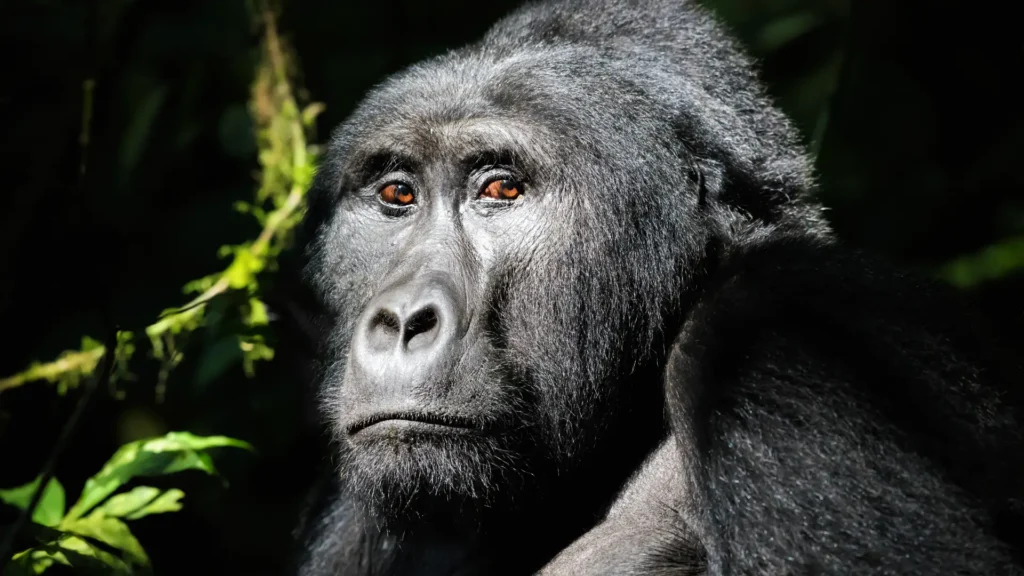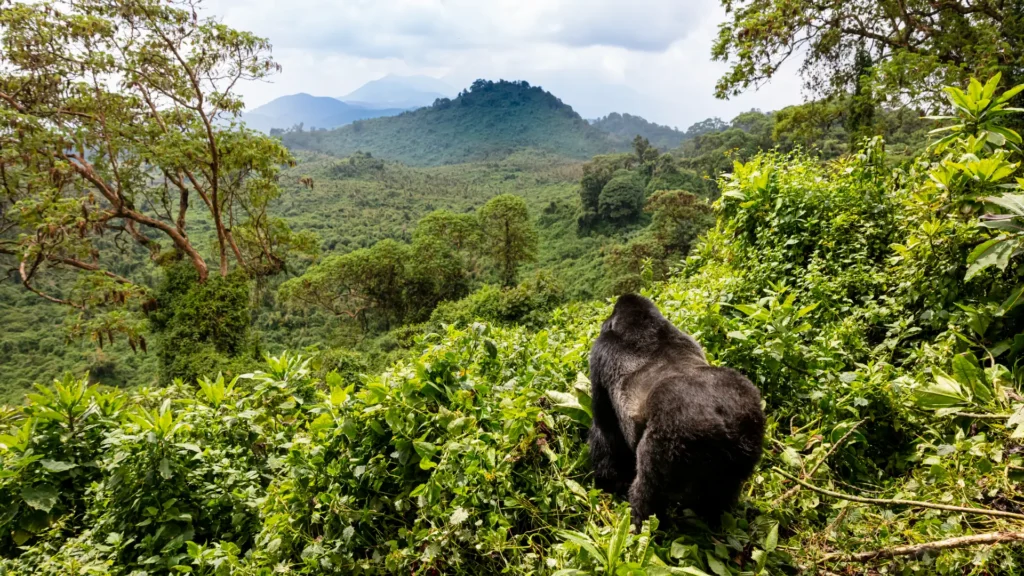In the depths of Uganda’s lush forests, half of the world’s remaining mountain gorillas precariously hang on to survival…
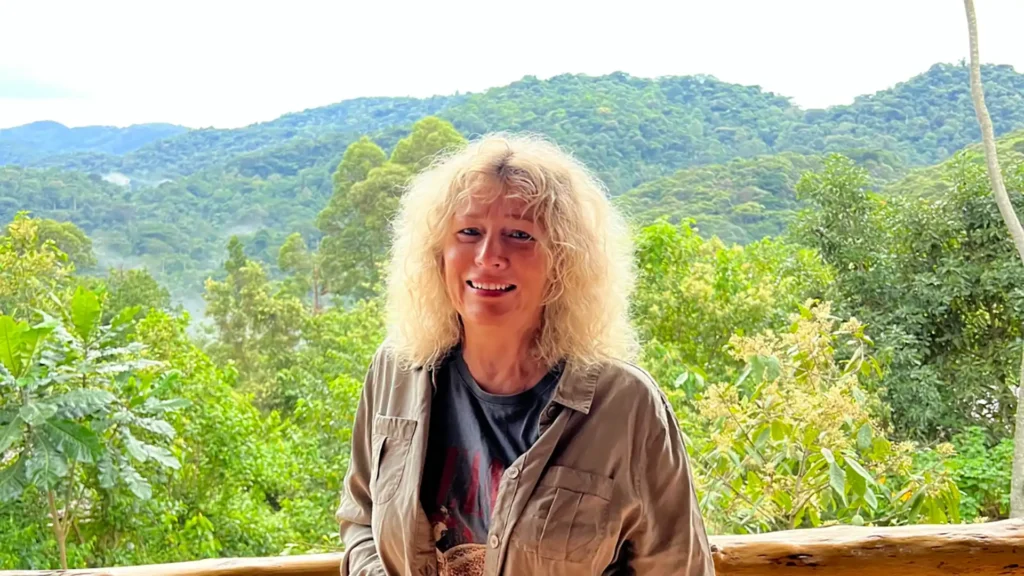
In the southwest corner of Uganda, taking step after step through the breathtaking Bwindi National Park, the air heavily laden with humidity, a journey unfolds. One of urgency, awe and sweat!
Walking through heat, humidity and foot-high leaf litter into the bosom of the mountain, what unfolded is a testament to all that is nature. Beautifully verdant, abundant, radiant but fragile. This is what I saw when going into the valley that the Bikingi family of gorillas call home.
Resting on the lush forest floor just 12 feet from me was a mother, gentle and kind, playing with her four-year-old son. She asked him for a scratch by pointing to her back and he immediately obliged. Next to them was the deposed leader of the group, standing sentinel over the troop as a guardian, gently calling out to the others while occasionally plucking at tufts of grass between watchful glances. The rangers asked if I wanted to leave but the three and a half hours I’d been there felt so brief when watching such majestic creatures, I wanted the promised four hours!
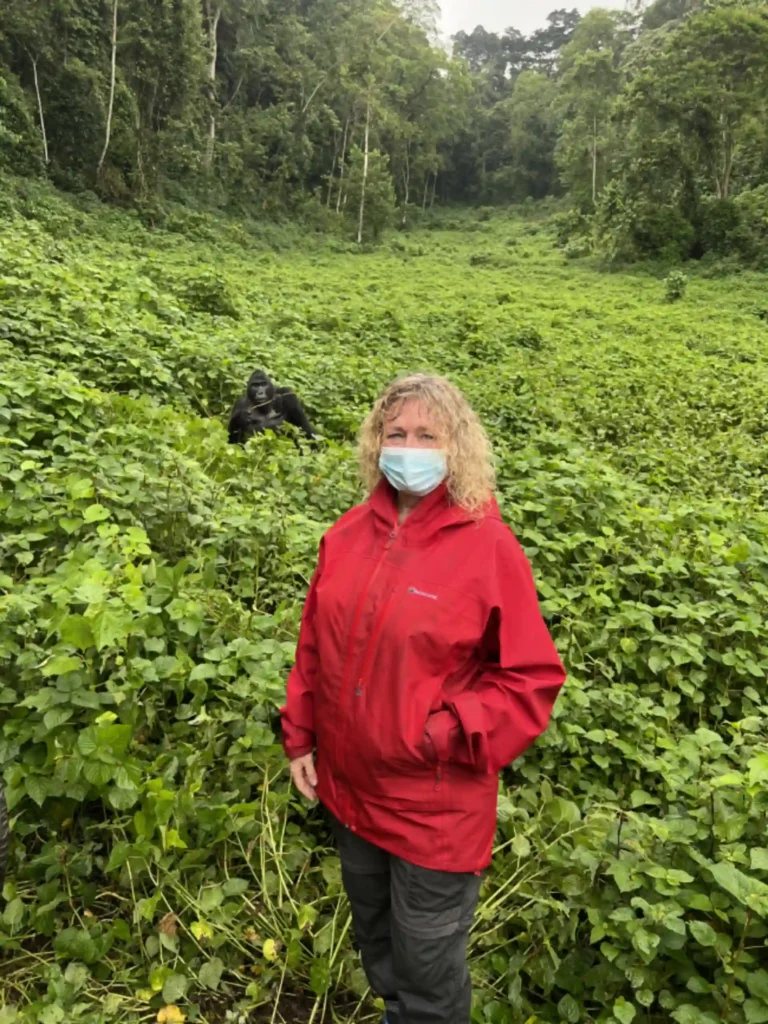
I was taken to see the alpha male, the leading silverback gorilla. He suddenly stood and was about my height but with key differences: he was 30 stone, with long rippling muscular arms and chest, and terrifying canines! He lunged towards me, a tower of power. I now know what ‘jumped out of my skin’ means. He was clearly satisfied with my reaction, which told him I knew he was well and truly the boss! He immediately sat down on the jungle floor and began to genteelly pull grasses through his mouth, plucking off the seeds.
Seeing these magnificent ape relatives up close, how they interact, how they care for their family, the way they call out danger to each other, groom each other and work and play together, was beautiful. They were obviously intelligent and caring, always acting with nature, not against it, aware of their place within the mountains. Yet as I stood amongst them, I couldn’t help but feel the suffocating weight of their predicament. While they try their hardest to live in harmony, to avoid poachers and to live in peace with their family, they can’t. There are those who want to take their lives or destroy their home. There are only 1,063 left of this unique and breathtaking species which once thrived in Africa.
They are one of our closest relatives, sharing 98.3 per cent of our DNA. They are highly intelligent, capable of dismantling hunters’ traps and crafting basic tools. This is all destroyed when poachers tear the families apart by illegally setting traps for bushmeat. Their numbers are so small that even one death is a great loss to the population.
Poachers, illegal logging, and agricultural development for crops or farmed animals are driving mountain gorillas to the brink, reducing their gene pool and threatening their chance of survival.
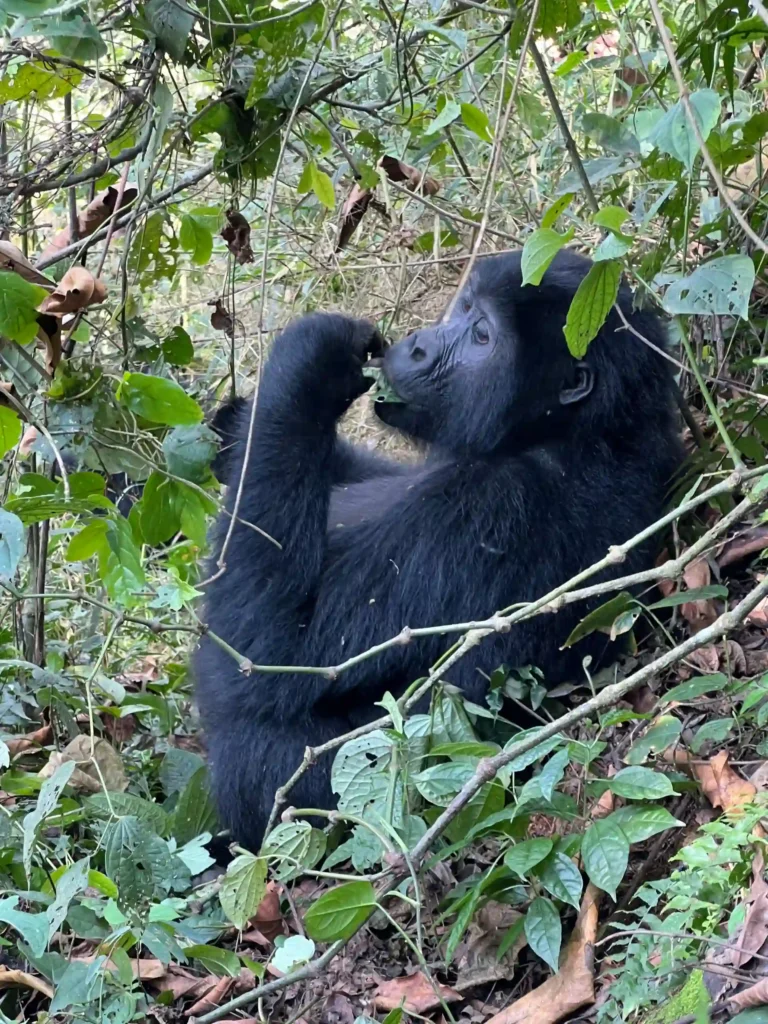
Mountain gorillas are found in only two of Uganda’s national parks, with rangers underequipped to protect them from locals who set snares and traps for other wildlife. It goes hand in hand with the illegal logging trade, which decreases their natural habitat, as does grazing cattle. This ties into a global picture whereby countless animals are at risk of extinction due to habitat loss. And the main cause of habitat loss is animal agriculture. The suffering of farmed animals is directly linked to the suffering of wildlife.
Find out more
Discover fascinating facts about mountain gorillas, including family structure, daily routines and how they communicate.
Learn all about the threats faced by Uganda’s mountain gorillas including poaching, habitat loss and disease.


